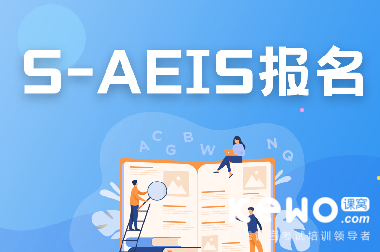AEIS语法“there be+名词+动词”结构用法

AEIS考试不同于国内的考试,它常常会考察一些拓展性知识,这就需要我们在平时多阅读多积累,提高词汇量。英语中的词性是比较难掌握的部分,在AEIS考试中也是考察的重点。下面小编为大家讲解AEIS语法“there be+名词+动词”结构用法!

1. there be+宾语+现在分词。现在分词表示主动关系,同时表示动作正在进行:
There is someone waiting for him. 有人在等他。
There was a man standing in front of me. 我前面站着一个男人。
There were some children swimming in the river. 有些小孩在河里游泳。
There were a group of young people working in the fields. 有一群青年在地里劳动。
有时现在分词可表示一种状态:
There’s a piano standing against the wall. 靠墙有一架钢琴。
There’re a lot of difficulties facing us. 我们面前有很多困难。
There is a door leading to the garden. 有一座门通往花园。
有个别现在分词用于该结构时可以表示将来(正如它们可用进行时表示将来一样):
There are ten people coming to dinner. 有10个人来吃晚饭。
2. there be+宾语+过去分词。过去分词表示一种被动关系,同时表示动作已经发生:
There is nothing written on it. 上面没写东西。
There were ten people killed in the accident. 事故中有10人丧生。
有时过去分词也可表示一种状态(可转换成被动结构):
There were some old men seated (=who were seated) in the back. 有些老人坐在后面。
There is a red car parked (=which is parked) outside the house. 房子外边停着一辆红色汽车。
3. there be+宾语+不定式。不定式通常表示动作尚未发生:
There was nobody to look after the child. 没有人照顾这孩子。
There was a large crowd to send him off. 有一大群人要来给他送行。
There was so much to lose that we couldn’t take any risks. 可能会有很大的损失,因此我们不能冒险。
【注】当其中的宾语与其后的不定式为被动关系时,可用主动表被动,也可用被动式:
There is much work to do [to be done]. 有许多工作要做。
有时其中的不定式为系表结构:
There is nothing to be afraid of. 没什么可怕的。
What was there to be afraid of. 有什么可怕的?
There’s nothing to be ashamed of. 没有什么值得羞愧的。
以AEIS为例,在完型部分分为语法完型和词汇完型,所以同样也会考察到学生的语法基础;在阅读部分,要读懂有一定生词量的篇幅较长的文章,就要训练学生在有生词的情况下,通过分析句子的语法结构,来把握长句难句的大致含义,从而不影响对文章的整体理解;如果想要了解更多AEIS视频课程可以持续关注本网站!


上一篇: AEIS词汇name只表达名字吗?
下一篇: 36个AEIS写作经典句式
猜你喜欢

剑桥KET、PET、FCE全解析,一篇文章轻松搞定!
 2024.04.18
2024.04.18

新加坡政府学校入学,AEIS考试是什么?一篇说清楚!
 2024.04.02
2024.04.02

2024年2月S-AEIS已经开始报名!最全攻略助您顺利报考!
 2024.01.10
2024.01.10

国际生最重要的考试马上开始报名!快准备报名材料!
 2024.01.03
2024.01.03

